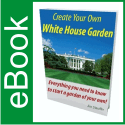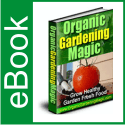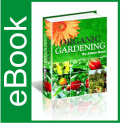Why you should have a Raised Garden Bed
Why you should have a Raised Garden Bed
Article by Colin D Price
Building a raised garden bed in your backyard can be particularly useful if you have poor, waterlogged soil and your plants are not growing well.
A raised bed has advantages over the ordinary bed because you are totally in control of the soil that you use and you are able to garden in a more comfortable position. The different soil conditions required for individual plants can be controlled much more effectively and can be varied from bed to bed; a pH soil test kit is a very useful tool to enable you to achieve the correct conditions for individual plants.
You can easily achieve loose, well draining soil as you won’t be walking on it to compact it. Raised garden beds drain excess water much better than normal garden beds, great news for areas with heavy soils and excess rainfall. This will help your plants intake of air round the root system, a major plus for abundant, healthy plants.
You can tend your raised garden bed in a more comfortable position which will help guard against backaches which can sometimes deter you in your endeavors to supply the family with fresh quality produce. It is also more convenient for those with disabilities or who have to garden from a seated position. We consider raised gardens to be a great asset to any gardener.
There is a wide choice of materials and sizes to choose from when deciding on raised garden beds for your own use. The availability of space will determine the size of the beds and how many you have. You can buy kits, or you can quite easily build your own out of anything that will hold dirt such as lumber, plastic, bricks or rocks. Lumber is the most commonly used and probably the easiest to work with.
There are a few things to think about when planning the raised bed. Decide on a comfortable height for you and make sure you can tend your plants from any angle without the need to walk on the raised gardens, thus preventing the soil becoming compacted. Make sure it’s situated in a position suitable for whatever you intend to grow, with regards to sunshine and light and there should be good access for tools and wheelbarrows. Raised gardens should be a minimum of 6 inches in height to help correct any drainage problems; also it would be wise to enclose the area to eliminate runoff and erosion of the soil.
Usually, when building raised gardens you have to buy soil in, just take the overall dimensions to your garden centre and they will work out what you need. If you know upfront what plants your raised gardens are going to be used for, they can advise and supply the appropriate soil mix. If you’re only raising the beds up to about 15 inches we advise you to fill them up with one half organic matter (from your composter) and one half soil. You can greatly reduce your costs by making your own compost. Now if your going to be looking at raised gardens that are waist high, say three foot, it makes sense that you take a different course of action to get good results and to try and lower costs. In order to reduce the amount of soil needed to fill this large space you can half fill it with rocks or sand then top it off with a 50-50 mix of manure or compost and soil. Adjust the pH levels for the plants you wish to grow and this will give your raised garden the ultimate growing conditions.
Raised garden beds are a great deterrent for various pests such as slugs and snails and also keep pathway weeds at bay.
About the Author
Colin Price has been very successful in all types of gardening over many years. Find out how you can take advantage of his knowledge and success and create your own beautiful and productive garden at =>http://www.OutdoorAndGarden.com

 May 14, 2012
May 14, 2012 







